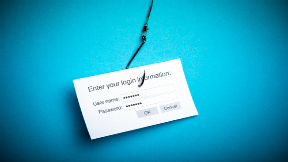|
|
Follow These Tips to Keep Your Smartphone Battery Strong

Smartphones are pretty incredible these days. They’re more like miniature computers – small enough to fit in your pocket – than they are phones. You can use these devices to surf the Web, text friends, run directions to the new Thai restaurant and watch movies. But all that power can suck the life out of a battery. Fortunately, there are strategies that you can use to extend the battery life of your smartphone. And Eric Limer, a writer for the Gizmodo tech site, wasn’t shy about sharing these tips in a recent feature.
Be smart
The first rule of extending a smartphone’s battery life? Be smart. Limer writes that you shouldn’t use up your battery life playing games like Angry Birds or Candy Crush or by keeping your Wi–Fi on when you’re not using it. And if you don’t need your GPS going, keep it turned off. Those are the obvious tips, of course. But there’s more to strengthening your phone’s battery.
Charging
Limer recommends that you keep your smartphone’s battery – which is most likely a lithium-ion battery – charged to 50 percent of its life or higher at all times. If you let your phone’s battery run to nearly nothing and then recharge it, you could, over time, make your battery a bit less effective. You don’t want to keep your phone charging at all times, either. That’s because lithium-ion batters can get overheated. Fortunately, your charger will usually cut off your phone’s charging for a while after it’s full.
Temperature
Maybe the most important way to boost your smartphone’s battery life, though, is to keep your battery cool. Limer writes that phone batteries degrade more quickly when they get too hot. Limer says that at an average temperature of 32 degrees Fahrenheit a smartphone battery will lose 6 percent of its maximum capacity each year. At 77 degrees, though, that jumps to 20 percent.
Top ↑
|
Is Apple’s Reign Coming to an End?

For years, Apple has been the biggest and the hippest name in technology. But there are increasing signs that the tech giant’s grip on consumers is starting to slip. Is Apple’s reign over the technology world over? Robert X. Cringely, writing for InfoWorld, thinks so. He recently devoted an entire column to the subject. If Apple’s dominance among tecchies is waning, what’s behind the fall? Cringely points to increased and more talented competition, much of it from rival Samsung.
Samsung’s Rise
In his column, Cringely says this: “It is now Samsung’s world. The rest of us just click in it.” Cringely provides some interesting evidence in this column to support this. Right now, Samsung ranks as the number–two maker of smartphones, behind Apple. However, Samsung is growing at more than twice the rate of Apple. And what’s equally important is that Samsung’s new products are generating more excitement than anything unveiled by Apple lately.
The Samsung Buzz
Cringely was writing his column from the IFA Berlin 2013 consumer electronics show. He writes that the big event should be renamed the IFA Samsung 2013 show. It’s at this show that Samsung has for the last three years unveiled its newest and most buzz-worthy products. For instance, Samsung unveiled its much-hyped Galaxy Gear smartwatch during the event. And this took place while Apple’s planned smartwatch has been little more than a rumor.
Winning the Race
Then there’s the ace for smart TV. Apple’s long–rumored HDTV has yet to debut. Meanwhile, Samsung has been active in this market for years, Cringely writes. In fact, Samsung now boasts OLED smart TVs with curved screens, ultra-high-definition displays and screen sizes ranging from 65 to 110 inches. And when it comes to the important smartphone market, Samsung’s Android phones are dominating the headlines and attracting the attention and dollars of consumers. Maybe Cringely is right; Samsung does seem to be on the rise while Apple is on the downslide.
Top ↑
|
Sitting All Day? You’re Putting Your Life in Danger

Are you sitting too much at work? Probably. In fact, if you work in an office the odds are good that you spend most of your day sitting at your desk and hunched over your computer. This isn’t good for your health. In fact, it’s downright dangerous. A recent story on Slate by writer Jason Bittel spells out the dangers. According to Bittel’s story, our bodies aren’t designed to sit for 11 hours. And that’s what many of us are doing. Even when we’re not at work, we’re sitting in our cars or slouching on our coaches watching TV.
What to do?
The solution seems obvious: We need to move around more. Of course, exercise – along with a nutritional diet – has always been an important part of living a happy, healthy life. The key, as Bittel writes, is to force yourself away from that computer for short walking breaks. And when you are sitting in front of your computer, try not to slouch. Bittel includes a call at the end of his story for participants in a quick Google Hangout every half hour. The Hangout meeting is designed to get people away from their computers and on their feet.
The right workstation
You can also build an ergonomic workstation to keep yourself from slouching and sitting the day away. CNET writer Sharon Vaknin provides tips on this. The first step is to find your ideal natural posture. For many people, Vaknin writes, this posture is the same one you use while driving a car: Your feet are on the floor in front of you. Your hands are in your lap. And your shoulders relax as you lean back slightly. Memorize this posture, and use it whenever you sit at your desk.
Keyboard and mouse
Next, you need to position your keyboard and mouse in the right place. These devices should be positioned so that your elbows are at your sides and your arms are at or below a 90–degree angle, Vaknin writes. Your keyboard should also be located at a height about 1 to 2 inches above your thighs. This might require you purchase a pull–out keyboard tray.
Top ↑
|
Small Data is Important, Too

Big data gets all the headlines. And why not? Each day, it seems, businesses generate mounds of data that they rely on to identify and target their customers. But there’s a new movement starting that suggests that big data, while important, isn’t the only tool that businesses should be using to reach more customers. Small data is important, too. And those businesses that ignore this run the risk of losing existing customers and failing to nab new ones.
Smaller Can be Better
Balakrishna Narasimhan, a writer with InformationWeek, recently tackled this subject. He pointed to a credit-card offer he received. The e-mail offer listed the type of rewards that Narasimhan would most likely want based on his purchasing habits, demographic and Web browsing habits. In other words, the company used big data in its offer. But Narasimhan said that this offer did little to entice him. What would have worked better, he said, was if the credit-card company had instead used the same data to send him a gift certificate to his favorite restaurant to reward him for his business.
Personal Engagement
Narasimhan writes that personal engagement is the best way for companies to earn more customers. He points to wine and social media expert Gary Vaynerchuk who has long promoted the Thank You Economy, which helps businesses engage customers with their small data. For instance, Vaynerchuk spends long hours answering questions on Twitter about different wine types. This builds a relationship. You can bet that many of these Twitter subscribers who’ve interacted with Vaynerchuk have purchased his company’s products. Narasimhan himself said that his company once discovered that one of its clients was traveling to Europe. They discovered this based on the client’s Tweets. The company sent the client a travel charger. The client was thrilled.
Big Data Pitfalls
Also writing for InformationWeek, Michael Healey says that too many companies are blinded by big data, something that leads them to too often make big mistakes. He points to the example of J.C. Penney. Former CEO Ron Johnson in 2012 looked at big data before ending discounting and launching what the company called “everyday value” prices. Sales tanked, and Johnson lost his job.
Top ↑
|
Consolidate Your Contacts to Stave Off the Phishing Attacks

Phishing attacks are still largely clumsy. You’ll get a message in your e-mail inbox from someone you’ve never met. If you open the mail, you’ll likely find a link to a strange Web site. Don’t click that link! But if you do visit the site, there will usually be a request for personal information, maybe even your bank information. If you provide this information? You might find your bank account drained. You can protect yourself from phishing with a bit of common sense: Don’t open strange e-mails and never visit the links in them. But Dennis O’Reilly, a writer with CNET, provides one big tip to prevent phishing e-mails from even reaching your inbox.
Consolidate Your Contacts
You might have several e-mail accounts, all of which have their own list of e-mail contacts. Certainly, many of these contacts will be duplicates. O’Reilly’s advice? Consolidate all the contacts you have with different e-mail accounts into one single address book. If you do this, you should leave yourself with one point of access to your e-mail addresses.
The Steps
To do this, O’Reilly suggests that you first export all of your contacts from your Web-based mail services. The steps to doing this vary by your e-mail service. For instance, to export your Gmail address book, first open “contacts” and the click “more > export.” Select the contacts you want to export, select the right format and then click “export.” To do the same thing with Outlook.com, select the “people” app and click “manage > export.” Select the “contacts” tab in the left pane. Click “actions > export all,” enter the captcha code and choose an export format.
Finishing
Next you should delete the contacts from your Web mail services, import your contact list to your ISP mail account and forward messages from your Web mail service to your ISP account. There’s no guarantee that your e-mail inbox won’t again fall victim to a phishing attack. But taking these steps will dramatically reduce the odds.
Top ↑
|
|






Leave a Reply
Want to join the discussion?Feel free to contribute!